The sage is called a plant from the family of Clanotkov, whose homeland is the Mediterranean. For several centuries ago, the culture began to grown in Northern Europe, and very soon it became one of the most popular medicinal herbs. Today, the plant is cultivated in the countries of Europe and Central Asia. It has been widely used both in culinary and for therapeutic purposes. This culture is considered a good honey. If the weather is warm and important, then the plant allocates fragrant nectar. In addition, there is a glue that is collected by bees. Honey turns out dark golden color and has a pleasant smell. With 1 hectares of Sage Bee collect nectar to 180 kg of honey. There are many varieties of this culture, but one of the most popular under the conditions of our latitudes is considered to be a dubber (Salvia Nemorosa). It is often grown in cottage areas, as it is an unpretentious plant. Next, consider the description, the technology of cultivation and reproduction of the sage of oak.
Content |
Shagelfea Dubravny: Description
The main characteristics of the Shagee of the dubber are as follows:
- The plant refers to perennials, so it can please their harvest for several years.
- The flowering period of the oak (pink) sage is flowing throughout the summer and ends at the beginning of September.
- The height of the oak sage depends on the grade of the plant, and ranges from 30 to 70 cm.
- In the cooking sage, the oak is used as a spice. In particular, the leaflets of cultures are added to salads, meat, vegetable and fish dishes, in soups and broths, grass sauces, omelets, cheeses. It is also required when picking cucumbers, for flavoring drinks.
- Most often, the plant is used in the dried form. So, it happens in the form of powder and twigs. This spice attaches slightly bitter, spicy taste and characteristic flavor. It is also worth noting that the sage is part of many spicy blends. Essential oil, which is obtained from Sage, is used in the cosmetic and perfume industry.
- The dried leaflets of the culture contains the most carbohydrates and dietary fibers. There is also water, proteins, fats and ash. Also contains vitamin A, C, K and some group vitamins of B. With regard to trace elements, in dried leaves there are potassium, magnesium, calcium, phosphorus and sodium. Microelements - manganese, iron, copper, selenium and zinc. As for the caloric content of the dry plant, then at 100 grams containing on average 317 kilocalories.
Sage Tarrow: Varieties
The following most popular varieties of culture distinguish:
- Sage adult schwellenburg. Highly productive plant, height is growing more than 55 cm. Flowers are bright red. Duration of culture flowering - from June to July a month inclusive. This variety of plants refers to decorative.
- Shagelfea Ostfriesland Caradonna. In height, it reaches 40-50 cm. Leafs have an oblong form. The diameter of inflorescence is about 30 cm. Flowers with purple shade flowers. Decorative grade.
- Sage Double Mainacht. Refers to high-temperature varieties. Height 75-80 cm. Flowers several times during the summer with flowers of purple shade. This is a winter-hardy grade.
Preparing the seams of the Shagey Dubravny
The preparation of the seams of the Dubravny Sage takes place in the following order:
- Before landing in the soil, plant seeds should be prepared. To do this, they are soaked in water mixed with 5-6 drops of an energy stimulator "Energy". They can be placed in a solution, bought in the tissue bag. The duration of this stage is 3-4 hours.
- Then on the windowsill or on the balcony, it is necessary to spread a thin cloth or gauze, and to decompose the exhaled seeds. In this form, they must lie for a day until they finally get sick.
- Next, we should prepare landing containers with soil. In landing ground, a fertile soil and peat must be present. Please note that the plant loves "freedom", so it is better to prepare as many containers for landing.
- At the bottom of the container should be laid drainage, because the sage does not like moisture stagnation.
- Seeds of plants are immersed in the soil for 1-2 cm. From above, the ground is sprinkled and watered. Water during watering should be used in moderate quantity.
- Immediately before landing in the ground, it should be seeds to temper the procedure. For this, the containers with the soil remove for several minutes to the balcony. Over time, the stay of containers on the balcony can be increased to 1 hour per day.
- After the first sprouts were crushed and fastened, they can be resettled into the open ground to the site. Most often, seedlings are planting at the end of spring or at the very beginning of summer.
Planting Salfa Dubravnaya
After the sprouts appeared, they can be transplanted into the ground. This is held in the following order:
- Initially choose a landing site. It must be protected from drafts. The solar rays should be good to the clearing, although the sage feels well in half.
- For planting plants, sublibious grounds of medium acidity are suitable. A month before the landing on the site, phosphorus-potash feeding is made. And immediately before immersion of seeds, nitrogen fertilizers add to the soil.
- The planting wells should be a depth of 3-4 cm. Each hole is poured with a small amount of water, and then plunge the sapling there.
- The base of the sprout is sprinkled with soil, and then the area is watered.
Caring for Shalfe
Caring for the shagee of the oak is not too complicated and reduces to the correct watering and processing of soil near the plant:
- With irrigation, it is necessary to be very attentive. Although the sage and the moisture plant, it is not worth overdoing with moisturizes. The soil around the bush should be slightly wet. Too abundant irrigation will result in soil refund, which may cause fungal diseases. Watering the plant only with an inactive sun. The most successful time is earlier morning or late evening. Day watering can cause the death of the plant (the active sun will simply burn its leaves).
- At all time of the vegetation of the plant, it is necessary to carry out a thorough price and loosening of the site. The presence of weeds can cause the plant to degrade or even die. The loosening is very positively affecting the state of the root system of the sage.
- In order for the Sage bush well formed, it is recommended to make it a haircut. The operation is carried out every 45-60 days. During her, the shoots of the plant are cut. During the flowering of Sage, the haircut stops. Plant collection for use in cosmetology or cooking starts with the beginning of the period of its flowering.
Sage Double: harvesting
Medicinal raw materials from Sage is a leaf or flowering top. In the first year, sowing it is usually collected in September, and in the future - 3-4 times in one growing season. Moreover, the first collection falls at the beginning of flowering, and the second - in September. Cleaning Sage usually occurs by mowing the above-ground part of the plant. Dry leaves in dryers, in attics or under a canopy. Under the first assembly, the yield of dry mass is obtained about 23%, and when assessing in September this indicator is 40%. Well dried leaves are then packaged in bales and stored in a dry room. If you need to collect sage on the seeds, then this is usually done when the seed boxes in the lower parts become brown.
Useful properties of the Shagee Dubravny
Sage Dubravnyy very much love dackets for his unpretentiousness and valuable useful properties:
- In traditional medicine, flowers and leaflets of culture are used as raw materials to obtain extracts, tinctures that are used for the production of various drugs. They possess good disinfectants, as well as anti-inflammatory properties.
- Preparations made from plant extracts are prescribed during dental pain, inflammation of almonds. In addition, they strengthen the central nervous system and reduce sweating. Decorations and tinctures from the top of the culture are used when losing hair, for douching with various gynecological diseases.
- With bronchial asthma, dry sage leaves are used. In addition, it is useful for women during breastfeeding, as it is able to influence lactation. Sage leaf when used in just a few days stops lactation.
- Infusion and decoction from Sage is considered a good tool to strengthen the bulbs of the hair. This can slow down the baldness process or stop it at all.
- Outwardly, the plant is used as infusion under fastening wounds, as well as with the thrush in children. Women this culture is useful for menstrual pain. In addition, using it you can reduce pain in the joints.
Diseases and pests Salfa Dubravny
Like most spicy plants, Sage is very resistant to the effects of pathogenic fungi and infections that cause diseases. Also, this plant is excellent insecticide, which is not very like insect pests. They try to bypass him.
The most frequent disease that is striking the landing of Sage is rot. This disease appears on those flower beds, on which irrigation technology is broken. The cause of its manifestation is the activity of fungi, which in the process of vital activity distinguishes harmful toxins, adversely affecting the development of the plant. It is necessary to deal with these diseases. It is necessary to comply with the rules of watering and soil care. The diseased plant must be removed from the bed, and, together with the land.
With too thick landing, there may be insect activity, such as: slugs, cute ticks, trips.
Since Sage is often used in medicinal purposes, it does not follow chemicals to combat pests. It is better to take advantage of the people's methods that in their effectiveness are practically no different from the processing of chemical insecticides. The simplest recipes for the fight against pest are:
- It is necessary to finely cut two heads of garlic (you can skip across garlic), pour them into a liter can and pour warm water. Then the resulting solution to put place in the place protected from the sun's rays and insist during the week. Then add a solution of the economic soap to it (30-50 grams) and the mixture obtained with a mixture, prehending it after gauze.
- It is necessary to take the husks of the onion bow, fervent it on 5 liters of boiling water, add 10 grams of soap to it, strain and spray him a bush of sage.
Sage Dubber in Landscape Design
In addition to the healing and culinary, the sage, the dubber has excellent decorative properties. Its small spikelets with amazing purple colors are perfectly combined with large buds of warm shades: yellow, red or orange.
For the design of classic gardens next to the sage groves roses, lilies. To make a beautiful alpine slide sage combined with Iris, hyacinths, tulips. In combination with cereal crops, you can create a rural landscape.
The most suitable varieties for use in landscape design are Salvia shiny and nutmeg sage. These are hybrid varieties that differ in fragrant aroma. They are often used to create so-called fragrant flower beds in the neighborhood with:
- Basilica.
- Rosemary.
- Fragrant mint.
- Chamber.
- Parsley.

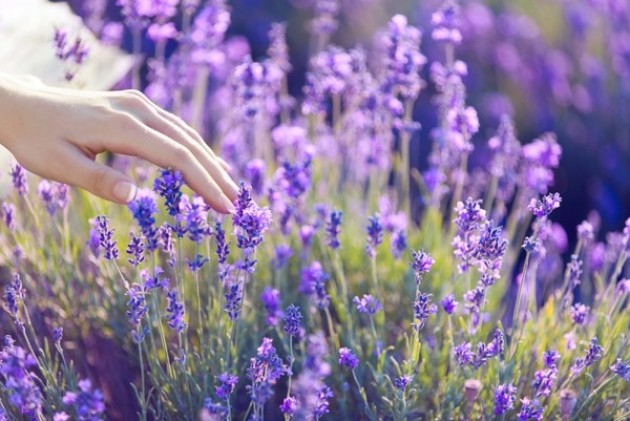
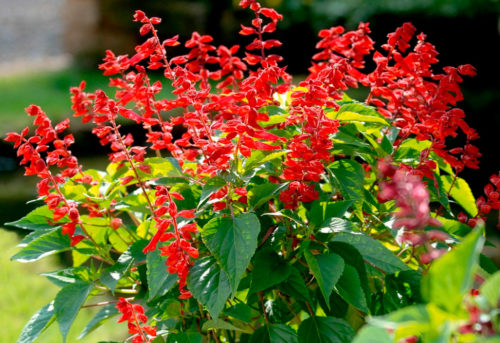
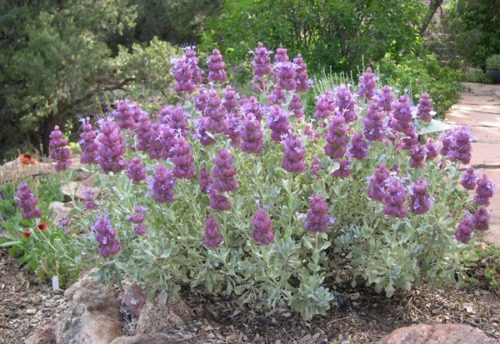
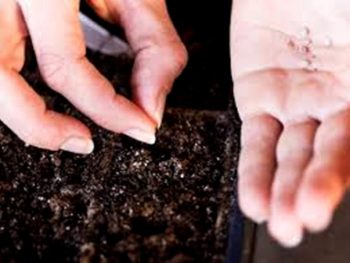
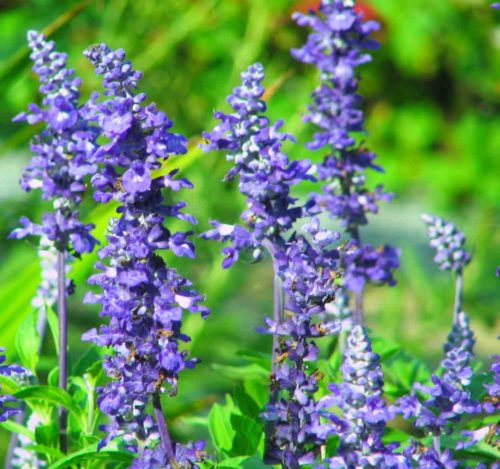
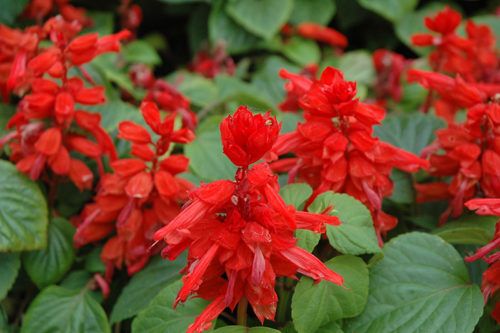

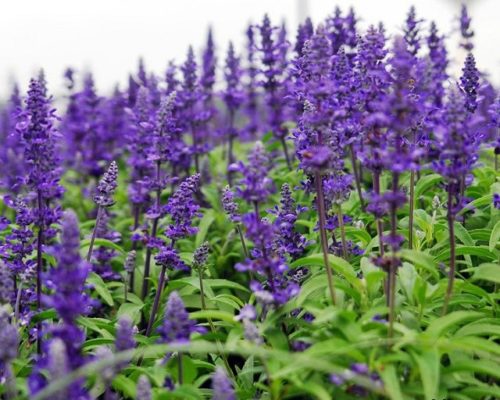
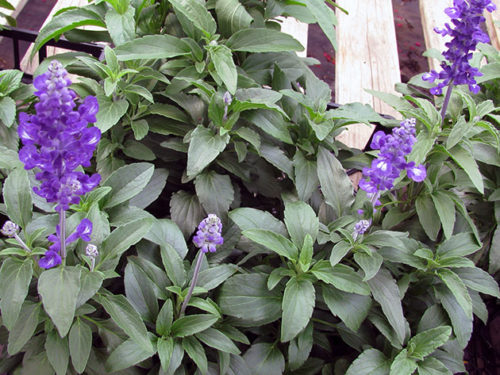
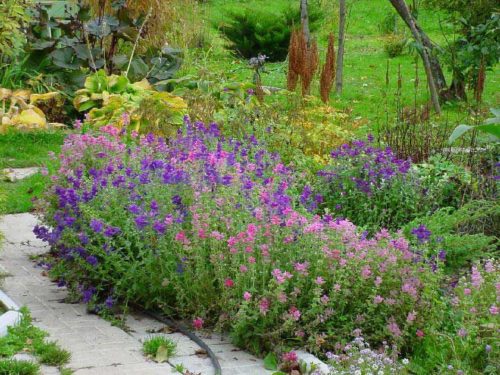
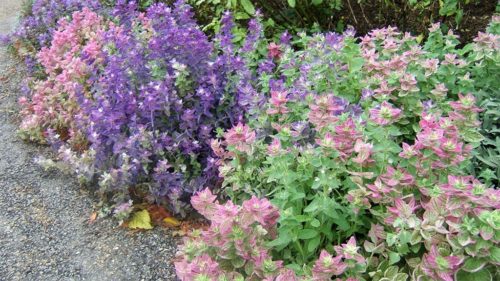
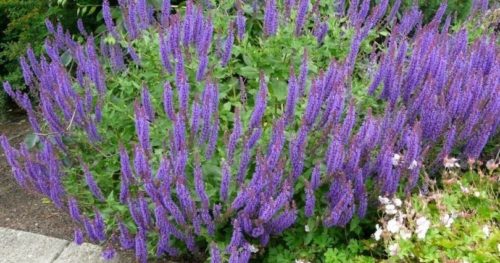
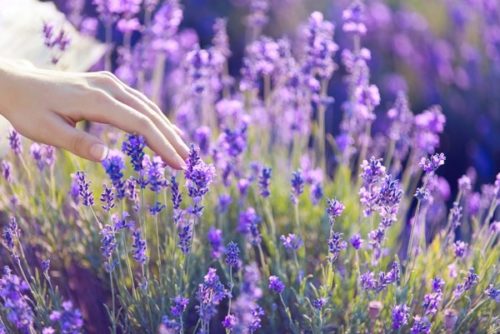
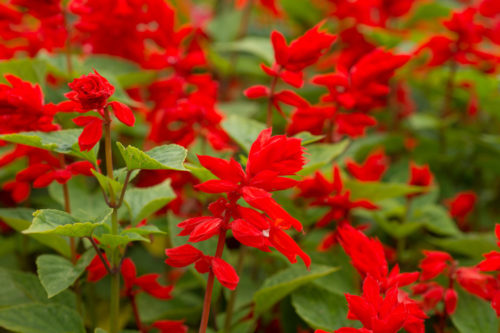
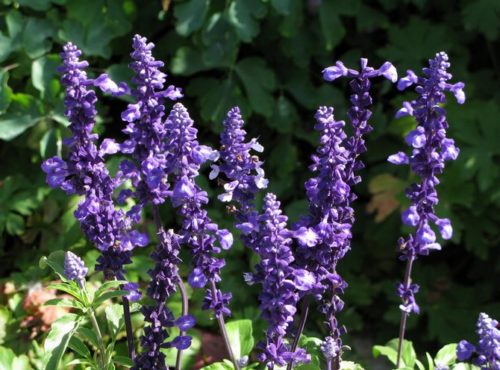
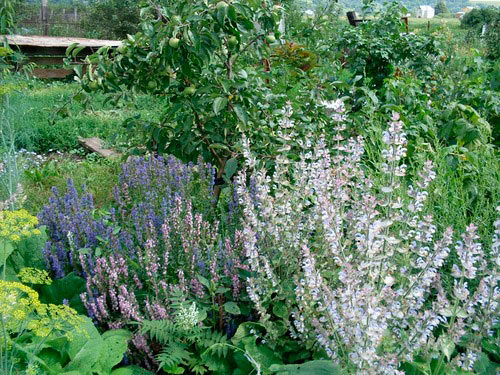












 Start a discussion ...
Start a discussion ...